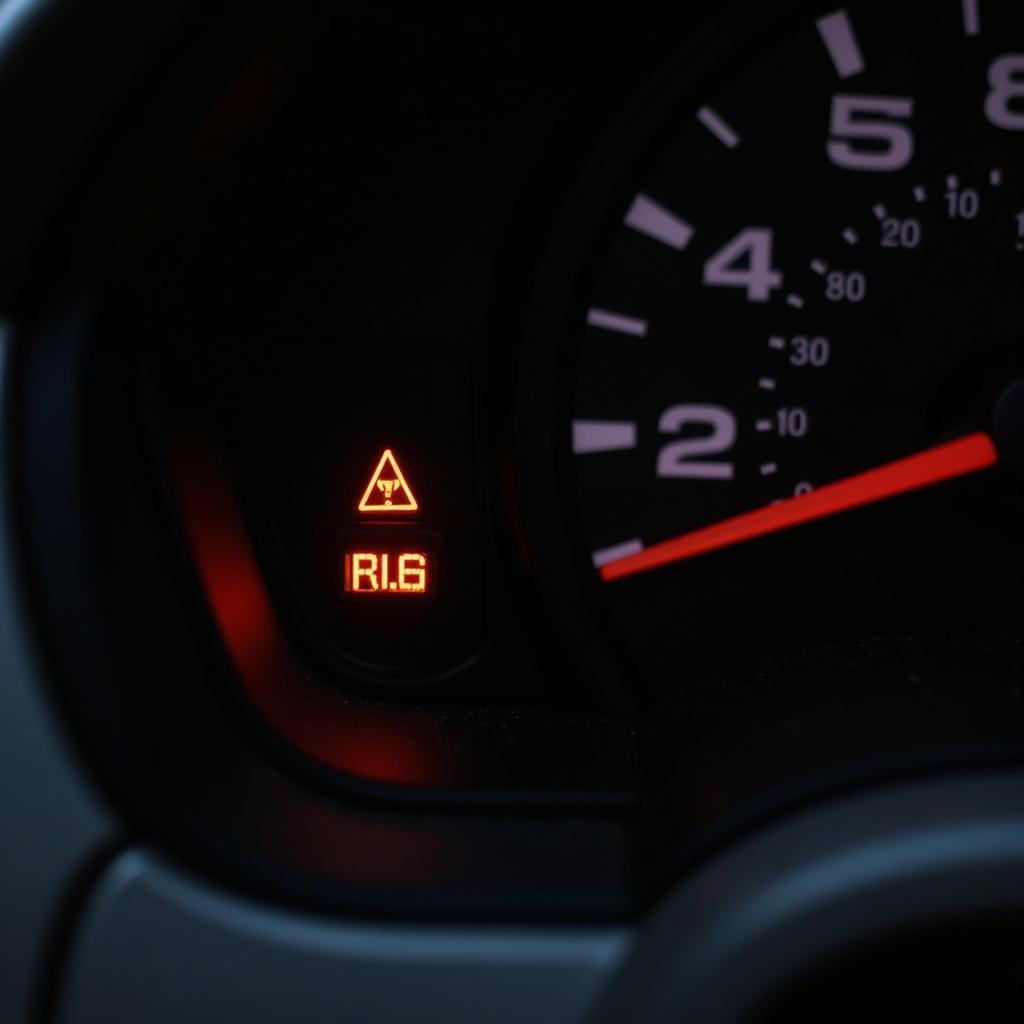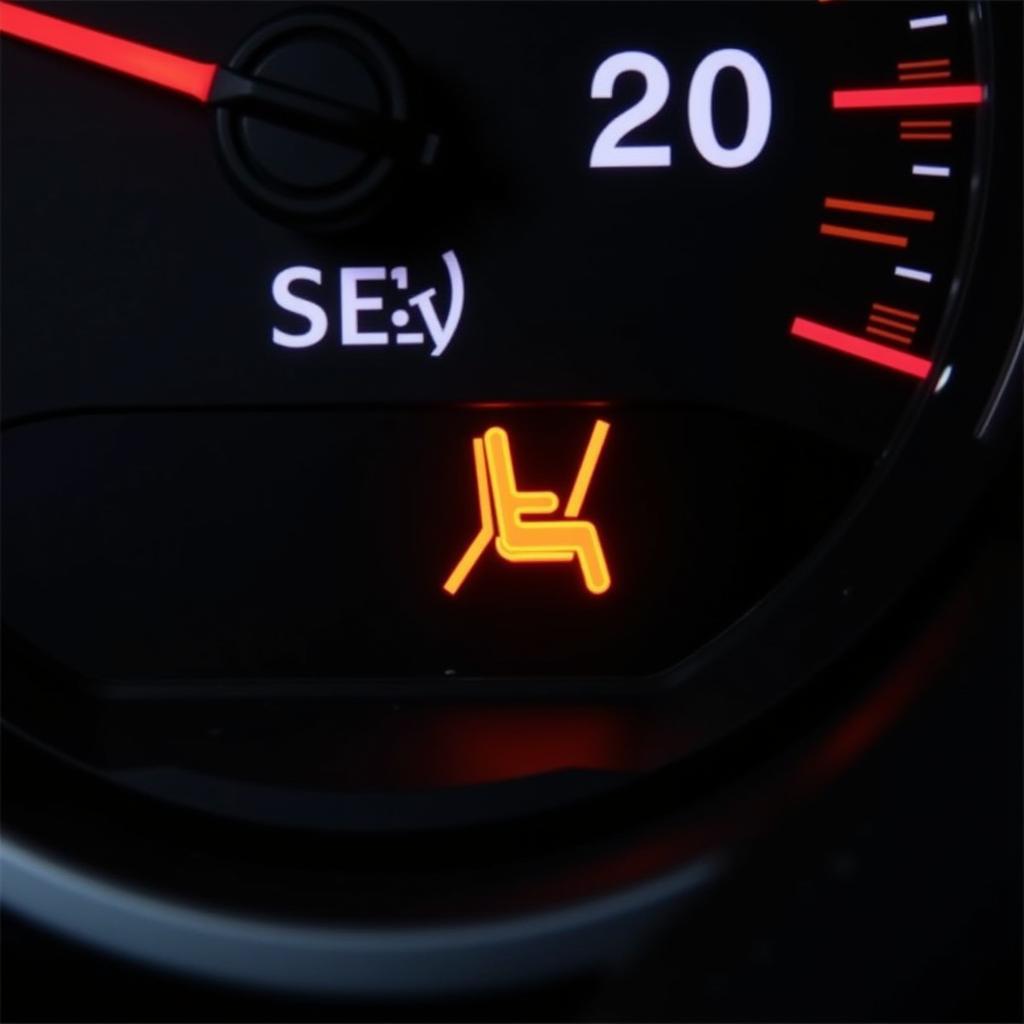“Tap your brakes lightly to warn the vehicle” – this message might appear on your dashboard and leave you slightly puzzled. What does it mean, and what should you do about it? This message is often associated with advanced driver-assistance systems (ADAS) features like Adaptive Cruise Control (ACC) or Forward Collision Warning (FCW). It signals a potential issue with these systems, urging you to take temporary control of the vehicle.
Let’s delve deeper into the reasons behind this message, what it signifies for your vehicle’s safety systems, and how you should respond to ensure a safe driving experience.
Understanding the Message: Why Your Car Needs You to “Tap the Brakes”
Modern vehicles are equipped with sophisticated driver-assistance systems designed to enhance safety and convenience. These systems, however, rely heavily on sensors, cameras, and complex algorithms to function correctly. When the message “tap your brakes lightly to warn the vehicle” appears, it typically indicates one of the following:
1. Sensor Obstruction or Malfunction
ADAS features depend on sensors, often located behind the windshield or in the front grille, to detect obstacles, lane markings, and the distance to the vehicle ahead. Dirt, debris, snow, ice, or even a minor misalignment can obstruct these sensors, hindering their ability to gather accurate data.
What happens: When sensors are obstructed, the system might not be able to accurately judge distances or identify potential hazards. As a safety precaution, the vehicle prompts you to “tap your brakes,” essentially taking over control and reminding you to stay vigilant.
Example: Imagine driving on a snowy day. Snow buildup on the front sensors might prevent them from detecting a slowing vehicle ahead. The “tap your brakes” message serves as a crucial warning, prompting you to intervene and brake manually.
2. System Calibration Issues
Like any complex system, your car’s ADAS features require periodic calibration to ensure accuracy. Calibration ensures that the sensors and cameras are correctly aligned and communicate effectively with the vehicle’s control modules. Factors like minor fender benders, driving on rough terrain, or even software updates can necessitate recalibration.
What happens: If the system detects a calibration issue, it might trigger the “tap your brakes” message. This warning is a precautionary measure, indicating that the system might not be operating at its optimal level of accuracy.
Example: Let’s say you recently had your windshield replaced. Even a slight misalignment during the installation could affect the forward-facing camera’s calibration. The “tap your brakes” message is the car’s way of informing you of this potential discrepancy.
3. Temporary System Overload
ADAS features process vast amounts of data in real-time. In certain situations, such as driving in heavy traffic, navigating complex intersections, or encountering rapidly changing weather conditions, the system might experience a temporary overload. This overload could lead to delayed responses or inaccuracies in data interpretation.
What happens: To prevent any potential hazards arising from this temporary overload, the vehicle displays the “tap your brakes” message, prompting you to assume control until the system stabilizes.
Example: Consider driving through a tunnel with heavy traffic. The combination of limited visibility, multiple vehicles in close proximity, and changing light conditions could temporarily overload the system, triggering the warning message.
What to Do When You See “Tap Your Brakes Lightly to Warn the Vehicle”
The message “tap your brakes lightly to warn the vehicle” is not necessarily an indication of a serious problem, but it shouldn’t be ignored. It’s a sign that your vehicle needs your attention:
-
Take Control: The most immediate action is to take control of the vehicle. Gently apply the brakes as instructed. This action reassures the system that you’re alert and ready to intervene.
-
Assess the Situation: Check your surroundings for potential reasons behind the message. Are the sensors visibly obstructed? Are you driving in challenging conditions that might be affecting the system?
-
Consult Your Owner’s Manual: Your owner’s manual provides specific information about your vehicle’s ADAS features and troubleshooting steps.
-
Schedule a Service Appointment: If the message persists or you suspect a sensor malfunction or calibration issue, it’s essential to schedule a service appointment with a qualified technician.
Preventing Future Occurrences
While not all causes are preventable, here are some tips to minimize the chances of encountering this message:
- Keep Sensors Clean: Regularly clean your car’s sensors, especially during inclement weather. Use a soft cloth and avoid abrasive cleaners.
- Schedule Regular Maintenance: Adhere to your vehicle’s recommended maintenance schedule, which typically includes checks and calibration of ADAS features.
- Be Mindful of Driving Conditions: Be aware that challenging driving conditions, like heavy rain, fog, or snow, can affect sensor performance. Exercise caution and be prepared to take control if needed.
The Importance of Understanding Your Vehicle’s Technology
As vehicles become increasingly sophisticated, it’s crucial for drivers to have a basic understanding of their car’s technology. The message “tap your brakes lightly to warn the vehicle” highlights the increasing interaction between drivers and their cars. While ADAS features enhance safety and convenience, they are not a substitute for attentive driving. By staying informed about these systems and responding appropriately to warning messages, you contribute to a safer driving experience for yourself and others on the road.


